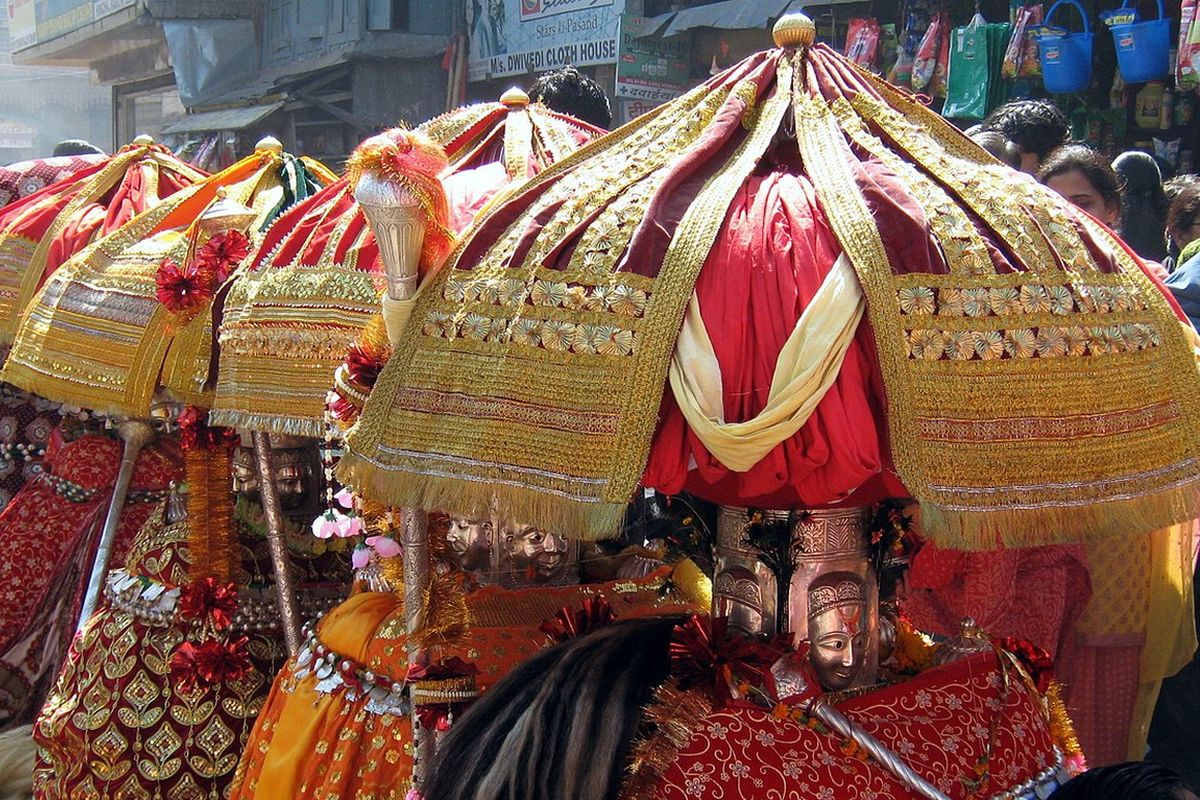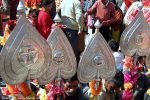Himachal govt should revoke increased taxi fares, drop plan to increase bus fares: BJP
BJP has demanded revoking the decision and also dropping the plan to increase bus fares.
Maha Shivaratri is a festival celebrated all across India. While in some parts of the nation, people pay their respects to Shiva by fasting, in other parts various people flock to temples dedicated to Shiva. On the occasion of Maha Shivaratri, Sahapedia explores Mandi’s seven-day Shivaratri fair and why it is celebrated.

The Divine Company. (Photo: Wikimedia Commons)
Among the Hindu bouquet of fasts and days fixed for the worship of a specific god, Maha Shivratri is definitely one of the most important. Observed across the country, celebrations for this fast is more meditative than revelry, with people observing a fast from almost the previous day, chanting mantras and praying to the venerated Shiva. However, in a small town in Himachal Pradesh, jubilation and gaiety manifest in the form of a seven-day Shivaratri Mela (fair) in Mandi.
Rooted in local belief, there is a reason why Mandi is often called the ‘Varanasi of the hills’ and ‘chhoti Kashi’ (little Kashi). In fact, residents of the region boast that while Kashi (as Varanasi is also called) has 80 temples, the small town built along the banks of the river Beas has 81! While one may not have gone around counting in both cities, but it’s said that in 1919 one such attempt was made, and at the time the count was almost 50 in Mandi.
Advertisement
Most of these Mandi temples are dedicated to Shiva, with the Trilok Nath temple, Pachvaktra temple, and the Bhootnath temple being the main ones. It’s at the Bhootnath temple that the centuries-old Shivratri Mela is held. Historian and Indologist Elisabeth Conzelmann explores the possible origin of the temple and the fair in her 2006 paper, ‘The Royal Ritual of Mandi State’. She writes, ‘In local Rajput history, it is described thus: after his victory (in 1526), Ajbar Sen thought of building a palace and a capital’ and that ‘the temple of Bhootnath (Siva) was built where the linga of the deity had revealed itself.’ It’s believed that the Maha Shivratri Mela began with the establishment of the Bhootnath temple.
Advertisement
Interestingly, though, while the event was held in honour of Bhootnath—and a later addition of Madho Rai, a form of Lord Vishnu, in the 18th century—the fair proves to be a congregation point for hundreds of local deities from Mandi and the surrounding towns and villages.
READ | Mahashivratri special: The nuances of Shivratri in Delhi and Jaipur
Confluence of Gods
Called jaleb in the local dialect, the processions also include gurs (oracle priests who serve as the voices of the deities) and pujaris (priests). Once in Mandi, these processions are also taken out locally for three of the seven days of the mela. They begin from the Bhootnath temple at the town centre, and are led by the most important deity of the festival—Madho Rai.

Who is Madho Rai?
According to historians, the Bhootnath temple was the main temple of Mandi town, till the late 1600s, when the local ruler of the state Raja Suraj Sen—on advice from his priest—built the ‘Madho Rai temple’ dedicated to Lord Vishnu. He installed Madho Rai as the protector deity of Mandi.
As Prof. Karuna Goswami explains, this was because all Raja Suraj Sen’s 17 (some say 18) offspring had died right after birth, and he was worried that he would not have an heir. Advised by his priest, Suraj Sen converted to Vaishnavism, installing Madho Rai as the king of the state, and himself functioned as the dewan of the deity.
According to the historian Manu V. Devadevan, the ‘Shaivite rulers’ of Mandi ‘adopted Madho Rao as their tutelary deity’ and that ‘something similar is found in southern India, where the rulers of Travancore dedicated the kingdom to Padmanabha and ruled as his representatives’. Conzelmann says that the mela that had begun with the establishment of the Bhoothnath temple assumed a two-fold quality under Madho Rai, conflated with the features a darbar (a royal court assembly), where deities from the neighbouring villages and towns came to pay their respects to Madho Rai.
Festivities and celebration
The other two gods who hold considerable importance at the festival are Kamru Nag and Parashar Rishi. While Parashar Rishi was ‘the oldest and the most powerful kulj (lineage god) of the rulers’, Kamru Nag has ‘a direct link with the capital, the ruler and Bhootnath, and the three of them were linked together in the rain ritual called garua’. Kamru Nag’s association with rain makes him an important deity who is the first one to be received by Madhorao. After reaching Mandi and paying respects to the Bhootnath temple, the palanquin of Kamru Nag is taken to the temple of Tarna Devi atop a hill from where he observes the proceedings of the festival.
During the seven-day fair, people from the town and the neighbouring villages flock to the grounds for darshan, to ask questions and receive blessings from the various deities who jump on the shoulders of the palanquin carriers in joy and gaiety. In the temples, the priests carry out the rituals and practices, reciting chants to please the gods that are present in the town. Today, even though the festival has witnessed various changes over the years such as officials of the Indian government replacing the king as the host of the fair, the ban on ritualistic sacrifice of goats at various temples during the Shivaratri fair in 2014, and the modernisation of the fair with cultural evenings that involve famous celebrities, the numerous gods and goddesses still grace the small town of Mandi with their presence, creating an atmosphere of joy and festivity.
(Manan Kapoor is a writer with www.sahapedia.org, an open online resource on the arts, cultures and heritage of India.)
Advertisement